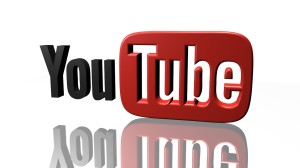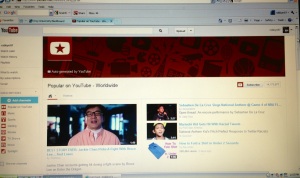CREATING A VIRAL INFECTION
Posted by Robbyn Brooks
Companies need social media presence, but don’t always play fair
We’ve all seen what happens when companies fail to respond to a crisis where people are talking about it. BP took a hit, Chick-fil-A took a big hit – all because they failed to respond in a timely matter to discussion that was happening where they weren’t present. In the case of BP, the company allowed someone else to set the tone of their response to the Gulf oil spill. They weren’t talking and didn’t really have an established social media presence, so someone else created a presence and did the talking. And that someone else was callous and funny, contributing not only to the thought that BP was hiding from consumers, but also adding negative thoughts about the company to people’s mindsets. In Chick-fil-A’s case, the company already had an established social media presence, especially on Facebook, but they didn’t use it. It took about two days for the company to respond to allegations that Chick-fil-A was anti-gay. That’s way too long in terms of crisis response.
From watching national companies tank at their responses, and also pull themselves out of a crisis with social media, we’ve learned that it’s best to have a positive social media interaction with consumers before a crisis happens. Already having an open line of communication is key, along with establishing a responsible and creative image for a company.
 Many companies are realizing the benefits to being proactive when it comes to creating content and reaching the maximum number of viewers by making their messages and videos go viral. Advertising Age releases a list each Thursday of the top 10 viral ad videos each week. Check them out. Some of them have also appeared on television, like this week’s highlighted American Express “This is What Membership is” commercial with more than 1.5 million views on YouTube. Others are primarily online campaigns or foreign efforts such as the Melbourne Metro Trains release “Dumb Ways to Die” with nearly 1.9 million views. It has a catchy little tune and although it’s on the longer side (an advertising no-no these days), I can see why people would watch every second of it.
Many companies are realizing the benefits to being proactive when it comes to creating content and reaching the maximum number of viewers by making their messages and videos go viral. Advertising Age releases a list each Thursday of the top 10 viral ad videos each week. Check them out. Some of them have also appeared on television, like this week’s highlighted American Express “This is What Membership is” commercial with more than 1.5 million views on YouTube. Others are primarily online campaigns or foreign efforts such as the Melbourne Metro Trains release “Dumb Ways to Die” with nearly 1.9 million views. It has a catchy little tune and although it’s on the longer side (an advertising no-no these days), I can see why people would watch every second of it.
Viral videos, whether instructional or just entertainment, can establish a positive image for a company and reach a larger audience than regular customers. Take a look at the Pepsi “Harlem Shake” video featuring Jeff Gordon. There is absolutely no point to the effort other than to make the company relevant considering pop culture. Point or not, the video has garnered almost 7 million views just on Pepsi’s original upload. That doesn’t include all users who re-uploaded the video to their own YouTube channels.
 So what’s the trick to creating a viral video and getting it seen by millions? According to The Commotion Group, many companies don’t leave going viral to chance. They pay big bucks to make it happen. Here are some tips from Dan Ackerman Greenberg, co-founder of the group and lead TA for the Stanford Facebook Class. Greenberg said he and his coworkers run a “clandestine” effort to make videos go viral for companies – including movie studios, record labels and other businesses.
So what’s the trick to creating a viral video and getting it seen by millions? According to The Commotion Group, many companies don’t leave going viral to chance. They pay big bucks to make it happen. Here are some tips from Dan Ackerman Greenberg, co-founder of the group and lead TA for the Stanford Facebook Class. Greenberg said he and his coworkers run a “clandestine” effort to make videos go viral for companies – including movie studios, record labels and other businesses.
- Keep it on the short side: A 15-30 second video is the best plan to keep people watching.
- Think in terms of remixing: Create a product that others can remix and pass along. (Dramatic hamster.)
- Don’t think you can just create an ad: Viewers won’t share videos unless they find them interesting and unique. Don’t make it feel like just another advertisement. (Sony Bravia)
- Don’t underestimate shock value: Create a reason for viewers to investigate the video further. (UFOs in Mexico)
- Fake it: Fudge and use headlines that are sensational (Stolen Nascar).
- If all else fails, remember sex sells: Put attractive people in videos. That’s simple. Remember Yoga 4 Dudes from a while back? Or any of PETA’s Superbowl commercials?
Once you have a video, it’s important to market it in the right places. It’s estimated that tens of thousands of videos are uploaded to YouTube everyday and about 80 million videos get seen. The key to becoming noticed on YouTube is getting on the “most watched” page, Greenberg said. To do that, you need at least 50,000 views. That means you have to get people to watch the video before you can make it go viral. In an earlier blog, we discussed opinion leaders and the importance of marketing items to them and not just the masses. Making a viral video is no different. Reach out to established bloggers who would find the content relevant, start threads and embed videos on forums, share to the max on Facebook and Twitter and don’t forget about friends. Everyone that you and your mother and your brother know should also know that you’ve created a cool video. Be shameless when it matters.
Other tricks that Greenberg shared are just that, a little tricky. So you may have to battle some ideas about ethics in advertising to get beyond them. One of those ideas is to “optimize” video titles. That means making it misleading to start with and then changing the title to be relevant to a brand after a few days. Another thought is to choose the most outrageous image to be the thumbnail displayed for the video. And another is to create multiple user accounts to have conversations about the video – with yourself.
While some of those tips might give the most ethical communications professional some heartburn, Greenberg said his methods work – citing that his company doesn’t get paid unless a video achieves at least 100,0000 views. Even so, Business Insider has some other ideas about how to create viral videos. Those are a little more tame and a little less “iffy.”
Even if you don’t agree with the idea of businesses tricking consumers into helping their videos go viral (it kind of takes some of the “warm and fuzzy” feeling out of the process), it’s interesting, also, as a consumer to see ways that we are tricked into helping spread a brand’s message.
What are some of your favorite viral videos? Here are three of my favorites, although they aren’t branding videos: Surprise Kitty, Charlie Bit My Finger, Scary Maze.
Posted on June 23, 2013, in Journalism, Just Because, New Media, Public Relations, Social Media, Strategic Communications, Technology. Bookmark the permalink. 1 Comment.

The title of your post, “Creating a Viral Infection” is very befitting! Once a video is placed into the “popular” category, the instant clicks it receives on YouTube spreads like a wildfire. Companies really do trick consumers into clicking on a video by having a misleading title in place. It’s happened to me several times! I’ll type in the name of a song in YouTube’s search bar, and a billion unrelated videos will appear. People aspiring for fame, singing over songs, and creating misleading titles is another great example. The need for hits on YouTube is at a high demand. In way though, I can sympathize with companies and bloggers and their tactics. Reaching 50,000 views is not an easy task! Even making it to a thousand is a little struggle. But once those videos hit “viral status” it is all she wrote! My favorite video is the “Single Ladies” video on YouTube. The guy is dancing to Beyonce’s “Single Ladies” song, doing her choreography and all!
Chick-fil-a is a Christian based establishment. Therefore, anything going against the Christian religion’s views is not accepted nor tolerated. I feel like that’s a given; they’re not open on Sundays. And even for someone who doesn’t believe in religion or what have you, simply knowing their policy as a consumer should have been priority anyway. That’s like being an avid shopper at Forever21, and not realizing at the bottom of every bag is a bible verse. It’s our responsibility as consumers to know what type of company we’re providing business to. If protesters disagree with Chick-fil-a’s foundations, as hard and tempting as it may be…they should find another restaurant to eat at.